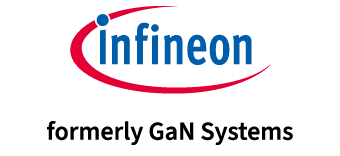sonnen: Changing The Way We Buy, Store, And Sell Electricity
This article, authored by contributing editor Peter Delly-Detwiler, was originally published in Forbes.com.
I recently had an opportunity to speak with Blake Richetta, Vice President of Sales for sonnen – the residential energy storage company that began focusing on U.S. markets in 2015. Richetta, who was briefly Tesla’s North American Powerwall sales manager, has an extensive background in lighting controls (working for Lutron for over 15 years), and understands the automated home environment.
Focused on residential markets, and creating energy communities where regulations allow
Sonnen is an interesting company for a number of reasons:
First, the company decided to focus solely on storage in residential markets, and to support solar installations, increasing customers’ ability to self-consume electricity produced on-site. It has no immediate intentions of looking at grid-scale applications or pursuing the on-premise commercial/industrial market.
Second, the company has made significant headway in selling its residential storage systems – and now has 18,000 grid-tied renewable energy storage systems in a half-dozen countries around the world (largely in Europe, with about 12,000 of those in Germany).
Third, and perhaps most unique, sonnen has implemented a novel concept of the ‘energy community,’ in which members buy and sell power from each other – an entirely new way of dealing with electricity.
The markets are not where you’d think they are
Richetta indicated that the strongest U.S. markets for residential storage aren’t necessarily where one would think they might be. Most observers might expect to see robust markets in places that look good on paper, states with high solar penetration or that have made a visible policy or regulatory nod towards batteries, such as California and Hawaii.
In fact, that’s not where the pay-dirt has been located, at least not yet. Larger numbers of buyers exist in other locales, motivated less by incentives and economics, and more by other factors. Richetta observed that,
// In early stages, it’s not about that (economics), as much as about early adopters…from a volume perspective we have had early adopters across the country because people think it is cool and they know that it is the right thing to do.
Those first-to-market buyers – who tend to be more “eco-forward” affluent – want energy security and independence and a truly carbon-neutral lifestyle. So (perhaps surprisingly), Utah and Nevada are leading markets (elimination of net metering in Nevada has made a better argument for solar plus storage in that state). And once sonnen sells an initial system into a neighborhood, the chance of selling more units increases greatly. This is a result of a phenomenon known as the ‘cluster’ or ‘contagion’ effect, a dynamic that has been known for some time by sellers of solar panels and electric vehicles. People who buy cutting edge ‘cool’ products like to tell their neighbors and peers about it. And some of them follow suit, purchasing and further spreading the message. That’s basic human nature.
Richetta commented that “if you get the early adopter, they buy it, and then they tell friends, and then you have a dealer/installer who has done three or four.” That initial beachhead is critical. “In this stage getting to the early adopter is very important. And if you get 50 systems deployed in one area, it’s a big deal.”
Sonnen has seen enough recent buyer interest in the U.S. that the company invested in building a sonnen InnovationHub in Georgia – which opens in Q2 2017 – to house their in-house R&D and production for the U.S. sonnen does not manufacture its own batteries, and has no plans to do so in the future. Instead, the company uses Sony’s Fortelion lithium iron phosphate battery (Sony is selling its battery business to Japanese electronic parts manufacturer Murata, though the sale, expected to close in April, is now being pushed out to July 2017).
The product and the technology: a focus on lifecycle costs
The sonnen storage product, the sonnenBatterie, comes in two kilowatt-hour (kWh) modules, with the smallest units sold starting at four kWh and going up to 16 kWh. It’s a more expensive product than the nickel-manganese-cobalt (NMC)-based systems offered by competitors such as Tesla, but Richetta stated that it can also last for many more years, offering a low cost per battery cycle.
Richetta noted that sonnen’s batteries compare favorably with the NMC batteries that Tesla uses for its stationary storage Powerwall product and which many electric vehicle manufacturers deploy in their cars. He asserted that NMC batteries are less expensive but they have one major drawback: they are only good for one or two thousand cycles. “That’s perfect for electric vehicles. It’s extremely energy dense and super light, and you need it to be light for an EV,” he stated.
// With an electric vehicle you are fine because you get 200,000 miles with 1,000 cycles, but with a house cycling every day you are only talking about a three-year lifespan. It’s a dramatically inferior chemistry. Daily cycling will burn these out.
By contrast, Richetta stated that the sonnenBatterie cells from Sony can deliver 13-14,000 cycles and are warrantied at 10,000 cycles (it should be noted that Tesla’s Powerwall 2 has a 10-year warranty but does not specify the amount of cycles).
The way to think about the sonnenBatterie, Richetta suggested, is to look at the cost of the service delivered over the product lifetime. If you consider the total number of kilowatt hours (kWh) that can be stored and released over the 10,000 cycles, it works out to about 14 cents per kWh delivered, “which is comparable to an EV battery.” With the added advantage that you don’t have to swap out the batteries as frequently.
Cycles matter with solar energy and self-supply
Storage systems used for grid stability or deployed on-site in the commercial/industrial sector (mostly to cut monthly expensive utility demand charges) generally don’t have to deliver energy as frequently. They are typically called upon to provide energy and capacity for shorter durations, and deployed less often – usually to avoid using energy during peak hours or to stabilize the grid. In these applications, lower cycle lives may be more acceptable.
By contrast, customers looking to complement and maximize the value of solar panel output, and store every possible hour of solar energy for self-consumption, will rely heavily on batteries that can cycle more frequently. That’s an energy game focused on kilowatt-hours, and here the cost per kilowatt-hour delivered over time becomes a far more important metric. That’s one reason sonnen has gained such traction in Germany, where there is a critical limitation on how much solar energy one can feed into the grid and self-storage is an attractive option (generous incentives for storage don’t hurt either).
Business partners: looking for the ‘solar progressives’
Looking forward, Richetta commented that the U.S. rooftop solar industry will likely see more pressure on the net metering construct (under which rooftop solar is delivered into the grid and credited at the customer’s retail rate – as if the meter runs backwards). He conjectured that more states may do what Hawaii did. For a period, owners of solar panels in Hawaii were able to export surplus power back to the grid at a much lower rate. Currently, with the exception of about 20 MW of capacity announced in mid-April (about 2,800 systems that were already in the queue) there is no longer any option to sell surplus power to the grid and the only option is to combine solar with storage and self-supply energy. Other states may push to enact time-of-use (TOU) rates. These regulatory constructs will generally increase the value of on-site storage.
The trick in working with the right solar business partners is therefore to find what Richetta calls the ‘solar progressives.’ The progressives are those installers that are already looking past the current net metering world, and anticipating that some kind of regulatory change will become inevitable as the volumes of on-site solar increase and utility revenues decline. “Let’s even embrace changes to net metering and TOU. That’s good, not bad,” he said.
Going forward, the sales strategy will also involve additional partners such as high-end custom home-builders who seek to differentiate their product with the addition of renewable energy plus storage. Some production home-builders will also fit into this category. High-end architects and designers are another segment to be embraced. Finally, Richetta said, the home automation industry also shows promise as a business partner.
“We need to be able to reach across to home automation integrators. They control the affluent resident market…They are good sales people. They sell on emotional connection, and vision and passion.”
Establishing peer-to-peer energy communities
Switching gears, Richetta addressed the rapidly growing peer-to-peer market in Germany. He explained that owing to the regulations there, it was actually possible to cut the utility entirely out of the transaction between individuals. Sonnen effectively plays that transactional role in Germany. The economic incentive for participation exists because of the lower price that the utility pays for surplus solar compared with the retail rate. What sonnen does in this arrangement is to serve as the hub between person A who has a solar surplus (that they would have formerly sold at an inferior price to the utility) and person B who buys part of that surplus at the full retail rate (in reality, all electrons are dumped into a big pool and this is mainly a matter of finance and accounting).
Sonnen sits at the middle of its 8,000+ members in the sonnenCommunity in Germany, and effectively balances the supply and demand. Richetta explained that if there is insufficient supply, sonnen will purchase the shortfall on the wholesale market (from other renewable resources). “We are the administrator, and we have aggregated storage systems. We have a third party who helps manage all this and the utility is no longer needed,”he said.
The company also recently created a product called sonnenFlat. This concept is growing very quickly – especially among users who don’t self-generate power. Almost all new customers in Germany are joining sonnenFlat, letting sonnen deploy their battery in exchange for a significantly reduced electricity bill. Using its aggregated storage capability, sonnen sells some services – such as frequency regulation, demand response, and even capacity firming – direct to the grid operator. Richetta explained, “We get revenue and put it against the electric bill.” Up to a certain level, and depending on the revenues received, sonnenCommunity members may pay nothing for their power.
In other countries like Italy and the U.S., one cannot simply cut the utility out. In many cases, utility partnerships are the way to go, and other models are being developed for these markets.
The company should have the resources to take the next steps in its planned trajectory. In October of last year, sonnen announced an $85 million capital raise (its fourth financing round) which will allow the company to pursue more R&D while further expanding into the U.S. and other markets.



